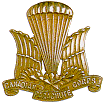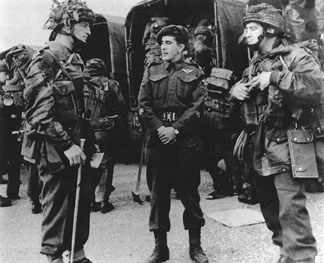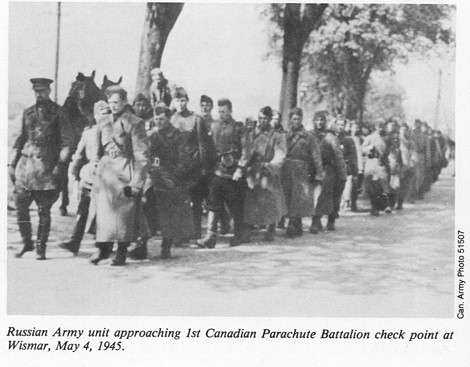|
|
The
1st Canadian Parachute Battalion A Capsule History |
 |
|
|
||||||||||||||||||||||||||||
|
In July 1942 National Defense Headquarters ordered the formation of a Battalion of Paratroopers. That summer, 25 selected officers and 60 NCO volunteers were taken from Canadian Regiments serving in England and were trained at Ringway, the British Parachute Training Centre. After qualifying as parachutists, these men returned to Canada and joined a similar group of Canadian volunteers being trained in Fort Benning, Georgia USA. This was the beginning of the 1st Canadian Parachute Battalion. |
 |
|||||||||||||||||||||||||||
|
A steady stream of volunteers from units across Canada were trained in Fort Benning from September 1942 until March 1943 when the S14 Canadian Parachute Training Centre at Shilo, Manitoba, was ready to take over the training. Well over 600 parachutists, all ranks, arrived from Benning in March 1943 to establish their base alongside the training facility. From the Summer 1943 to the end of the war, qualified parachutists were trained at Ringway and Shilo as available reinforcements for the Battalion. |
||||||||||||||||||||||||||||
 |
||||||||||||||||||||||||||||
|
The original concept of having a parachute battalion for the defense of Canada was abandoned in November 1942. The Canadian government then offered the battalion to the British command who were happy to receive a full battalion of men for it's newly formed 6th Airborne Division. The battalion arrived at Bulford, England, in early August 1943 and during intensive training were thoroughly integrated into the Divisions 3rd Brigade under Brig, James Hill, DSO, MC, and MGen. Richard Gale, Division CO. |
||||||||||||||||||||||||||||
|
2 Members from the
1st Canadian Parachute Battalion |
||||||||||||||||||||||||||||
|
At 0030 hours on the 6th of June, 1944 (D Day) the battalion parachuted into Normandy with the Division, and, although widely scattered, successfully carried out all it's objectives. Despite heavy losses, the battalion held off all German attacks until the middle of August breakout. The battalion continued as infantry and advanced on the heels of the retreating German Army until it was removed from the line of battle the beginning of September 1944 on reaching the Seine River. |
||||||||||||||||||||||||||||
 |
||||||||||||||||||||||||||||
|
Russian Army unit approaching 1st Canadian Parachute Battalion check point at Wismar, May 4,1945 |
||||||||||||||||||||||||||||
|
After returning to England to be reinforced, equipped, and receive further training to integrate new members, the battalion was ferried to Belgium on Christmas Day 1944. There they fought in the Battle of the Bulge. By the end of January, the battalion took over a defensive position across from a German parachute division along the Maas River in Holland. |
||||||||||||||||||||||||||||
 |
||||||||||||||||||||||||||||
|
At the end of February 1945, the battalion again returned to England to regroup, then parachuted over the Rhine River on March 24th, 1945 in the largest concentrated airborne operation of the war. After a short hard-fought battle, the battalion and division, in a brilliant six week 300 mile dash across Germany, reached Wismar on the Baltic Sea. There on the 2nd of May, 1945, they met the Russians, the only Canadian unit to do so. |
||||||||||||||||||||||||||||
 |
||||||||||||||||||||||||||||
|
1 Can Para parades through Wismar, Germany at the end of the War |
||||||||||||||||||||||||||||
|
The war in Europe was declared over on the 8th of May, 1945, and later that month the battalion returned to Bulford, England. On the 31st of May the battalion embarked for return to Canada, the first complete unit to arrive back in Halifax where it received a rousing welcome. After personnel returned from leave, the battalion was posted to Niagara-on-the-Lake where preparations were being planned for a move to the Far East. With the surrender of Japan on the 15th of August, 1945, the battalion was disbanded in September 1945. |
||||||||||||||||||||||||||||
|
|
||||||||||||||||||||||||||||
|
The battalion
sustained over 540 casualties while on active service. |
||||||||||||||||||||||||||||
